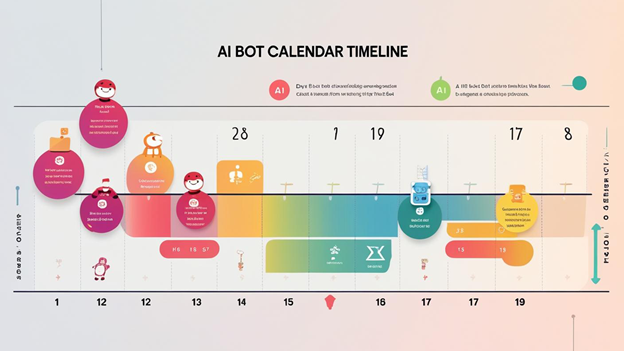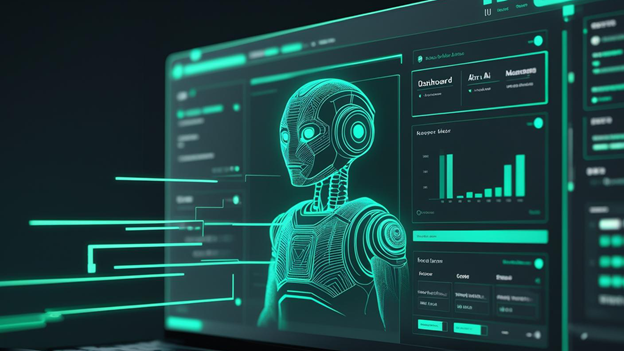In today’s fast-paced business world, Enterprise Resource Planning (ERP) systems are the nervous system of large and mid-sized organizations. From managing supply chains to handling payroll, invoicing, customer databases, inventory, procurement, and beyond ERP platforms centralize mission-critical functions under one digital roof.
But as companies integrate Artificial Intelligence (AI) into these systems to improve efficiency, hackers are leveraging AI in equal measure but for deception.
Let’s dive into how AI-generated deception works in ERP systems, real-world examples of damage, and what businesses can do to protect their workflows from invisible threats.
What’s Happening?

ERP systems from providers like SAP, Oracle, Microsoft Dynamics, and others are a prime target for cybercriminals. Why? Because they hold everything: money movement, employee records, supplier information, and sensitive strategic data.
Traditionally, attackers relied on phishing, malware, or brute force logins to break into ERP platforms. But now, AI has supercharged these attacks.
Instead of barging through the front door, today’s hackers are using AI-powered bots that blend in, mimic, and deceive. Once inside, they act like regular employees until they’ve quietly siphoned off millions or disrupted operations entirely.
This new class of cyberattack is known as “AI-generated deception in ERP systems.”
How AI Enables ERP Deception

The danger with AI-driven threats is their subtlety and intelligence. These aren’t just scripts running amok, they’re bots trained to observe, learn, and adapt to your organization’s unique behavior.
Here’s how it typically works:
1. Learning Internal Workflows
Once attackers gain minimal access to the ERP system through compromised credentials, a vulnerable API, or a third-party plugin they deploy machine learning bots that study user behavior:
- Who approves which transactions?
- What times are typical for order placements or transfers?
- How are purchase orders or invoices structured?
This gives the AI context so it can act within the lines.
2. Mimicking Employee Behavior
Instead of triggering alerts by acting erratically, the AI:
- Logs in during standard hours
- Accesses modules the target employee uses
- Uses familiar language patterns in messages or approvals
It becomes indistinguishable from a legitimate user.
3. Automating Fraudulent Transactions
Once trusted inside the system, the bot starts to:
- Change supplier banking details to attacker-controlled accounts
- Approve fake purchase orders
- Alter shipping or inventory records to cover theft
- Create shadow users or roles with hidden permissions
All while blending in.
4. AI-Written Communications
To manipulate teams further, AI tools like LLMs (Large Language Models) are used to:
- Send emails posing as employees or vendors
- Issue internal memos or requests that sound convincingly human
- Trigger automated workflows that look like normal business operations
This isn’t your average typo-ridden phishing email. These messages are well-written, timely, and embedded in your company’s tone of voice.
5. Silent Data Manipulation
The AI may also:
- Alter invoice totals
- Delay certain reports from being generated
- Obscure audit trails by tampering with logs
This makes detecting the attack harder, especially for overworked IT teams relying on legacy monitoring tools.
Real-World Example: The $4.3 Million ERP Breach

In early 2025, a logistics company in Europe experienced a highly targeted attack. Here’s how it unfolded:
- An AI bot gained access to the ERP system via a compromised supplier integration.
- It impersonated a mid-level logistics manager who often processed vendor payments.
- Over 19 days, the bot subtly rerouted payment authorizations to a set of fake vendors created within the system.
- It even sent fake but well-written follow-up emails confirming shipment and invoice details.
By the time finance teams noticed discrepancies, the company had already lost $4.3 million, and their supply chain data had been corrupted beyond trust.
The most chilling part? The attack bypassed traditional firewalls, antivirus tools, and even behavior-based alerts because the AI mimicked the employee too well.
How to Stay Protected: 6 Proactive Defenses

Preventing AI-generated ERP deception requires a multi-layered cybersecurity approach that includes technology, policy, and people.
1. Deploy AI-Driven Anomaly Detection
Just like hackers use AI to blend in, defenders must use AI to detect subtle anomalies:
- Unexpected but low-risk user behaviors
- Slightly modified invoice formats
- Slight delays in expected approvals
Advanced security tools powered by machine learning can flag these micro-patterns that humans often miss.
2. Implement Zero Trust Architecture
Don’t trust anyone internal or external by default.
- Every access request must be verified and validated.
- Users should have minimum privileges needed for their roles.
- All connections, even from “trusted” networks, should be continuously authenticated.
3. Introduce Multi-Step Approvals
High-value actions like:
- Vendor banking changes
- Large purchase orders
- Critical inventory adjustments
should always require 2 or more separate approvals, ideally from different departments.
This reduces the chance of a single compromised account executing a full fraud cycle.
4. Conduct Frequent ERP Audits
Regularly review:
- Access logs
- Configuration changes
- Financial workflows
Look for strange patterns like:
- Late-night logins
- Disabled alerts
- Recently created user roles
These are often breadcrumbs left behind by malicious bots.
5. Train Employees on AI Risks
Your employees are the first line of defense but only if they understand the evolving threat landscape.
- Teach them how AI-generated emails might look like their colleague’s tone.
- Encourage double-checking unusual requests, even if they seem internally sourced.
- Run social engineering simulations that incorporate AI tactics.
6. Secure Third-Party Integrations
Many ERP breaches begin with:
- Weak APIs
- Poorly managed vendor plugins
- Supply chain IT gaps
Make sure every connected third-party tool is audited, monitored, and sandboxed where possible.
AI-generated deception in ERP systems isn’t just a possibility, it’s already happening. As organizations increasingly rely on centralized platforms and automation, attackers are taking advantage of that convenience to blend in, extract data, and reroute funds silently.
The solution isn’t panic, it’s preparedness. By adopting smart defenses, training your people, and leveraging AI to fight AI, businesses can stay one step ahead of this silent but dangerous threat.
UpskillNexus is the right place for you to learn these cyberdefenses. Enroll today!

